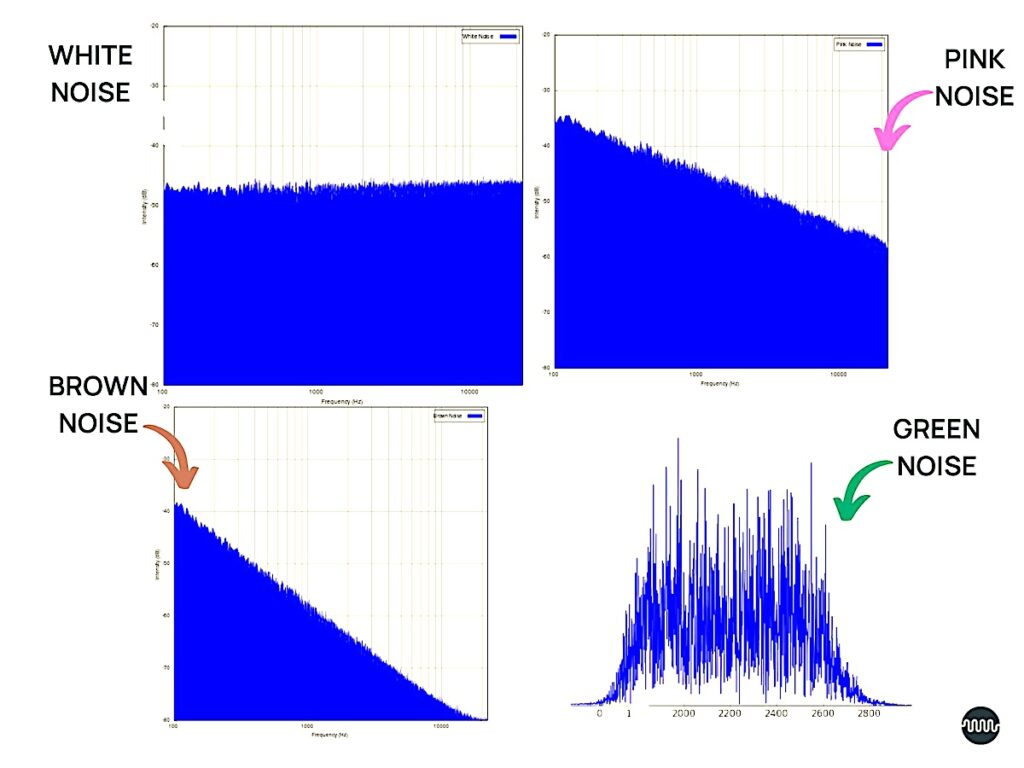- in Production by Bobby Owsinski
Forget About White, Pink And Brown Noise – Green Noise Is The Latest Thing
Most musicians at some time or another are exposed to pink noise as it’s usually used for speaker and room measurements. We’ve all heard white noise in the static between radio channels or on a television that isn’t tuned to a particular channel. Brown noise is low frequency and random like the sound you make during a walk, but green noise is gaining ground in helping people sleep. So what’s the difference between them?

White noise contains all frequencies across the audible spectrum. It’s often used to mask other sounds, like in an office environment so one office worker does’t bother another (called an “audio privacy screen”). Sometimes its used in the treatment of tinnitus.
Pink noise decreases in power over each higher octave, so it mimics the way we actually hear (no, our hearing isn’t flat). That’s why it’s used for speaker and room calibration. When it comes to sleep, the frequency spectrum of pink noise aligns to stimulate the brain’s neural rhythms, promoting an environment conducive to cognitive processing.
Brownian noise, or Brown noise (and sometimes called Red noise) is low pitched with the power rolloff twice as fast as pink noise. Many people find this soothing and results in improved concentration and memory. Think rumbling thunder.
But Green noise is relatively new. It’s most mid-range noise and it’s currently being used for sleep therapy. Since it begins to roll off at about 500Hz, many people find it calming, with a lowered heart rate, and even an enhanced mood. Think waterfalls or the ocean.
Let’s Get Some Sleep
All types of noise have been used to help people sleep with some success. Many people swear by white noise as it helps them to fall asleep faster and masks out any noises that might disturb the sleep process. The same goes for pink noise as it has less high frequencies, which many people find annoying, and brown noise can supply what many feel is a soothing rumble.
But green noise is a whole new ballgame. There’s some research that finds that this noise color may be the most successful in helping people fall asleep. While it retains all the other benefits of the other noise colors, green noise might also be beneficial for people who have racing thoughts and anxiety at night. The sounds in green noise is said to give them something to focus on in place of unwanted thoughts.
Those of us who record music for a living (which is every musician these days) sometimes forget that there are other parts of the audio business that are just a necessary to people’s well-being. Even the lowly randomly generated noise has a very useful place in the grand scheme of things. Don’t be surprised if we’re all listening to green noise in the future.
